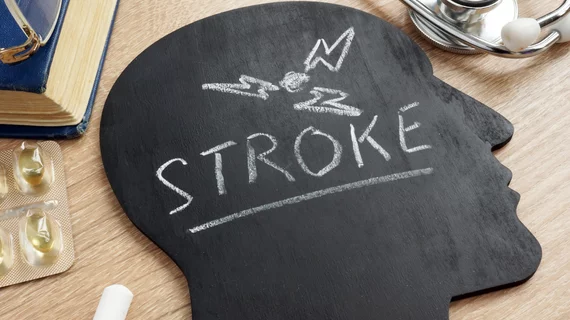FDA warns providers about potential misuse of imaging-based software for stroke triage
The U.S. Food and Drug Administration on Monday warned healthcare providers about the potential misuse of imaging-based software for prioritizing stroke patients.
Such radiological, computer-aided triage and notification devices for intracranial large vessel occlusion—an obstruction of a main artery in the brain—have proliferated in recent years. But they’re only intended for assigning urgency and do not provide a diagnosis, nor remove cases from the radiologist’s queue, the FDA emphasized.
“Information from real-world use suggests that providers may not be aware of the intended use of these devices,” the administration said in an April 11 letter, adding that, if not used as intended, “there is the potential for misdiagnosis resulting in patient injury or death”
The FDA issued five recommendations to avoid any potentially problematic scenarios. Such software should never serve as a replacement for imaging interpretation by a physician, and it cannot rule out the presence of large vessel occlusion, the agency emphasized. Nor can computer-aided triage devices remove radiological exams from the physician’s worklist, but they can help improve radiologists’ workflow by prioritizing suspected stroke cases.
“In addition, healthcare providers should ensure that they understand which vessels the device was designed and tested to evaluate,” the FDA added. “If the device is used for diagnostic decisions or to evaluate vessels for which it was not designed, delayed or missed diagnoses may occur and result in worsened outcomes for patients.”
The U.S. Food and Drug Administration said it is working with manufacturers to ensure that providers are properly informed about the use of such products. Government officials are also evaluating the performance of different imaging-related artificial intelligence devices and urged radiologists to share data on any potential adverse events.
Related Stroke Imaging Content:
Automated CT scoring system accurately predicts prognosis in stroke patients
New CT protocol uses scout images to expedite stroke patients' path to MRI
What decades of data tell us about stroke rates in the U.S.
Most Americans live within an hour of a stroke center
FDA warns providers about potential misuse of imaging-based software for stroke triage
Radiologists must change their approach to stroke care in the AI era
MRI findings associated with poor thrombectomy outcomes after stroke
Risk of recurrent stroke 48% higher among young marijuana users

